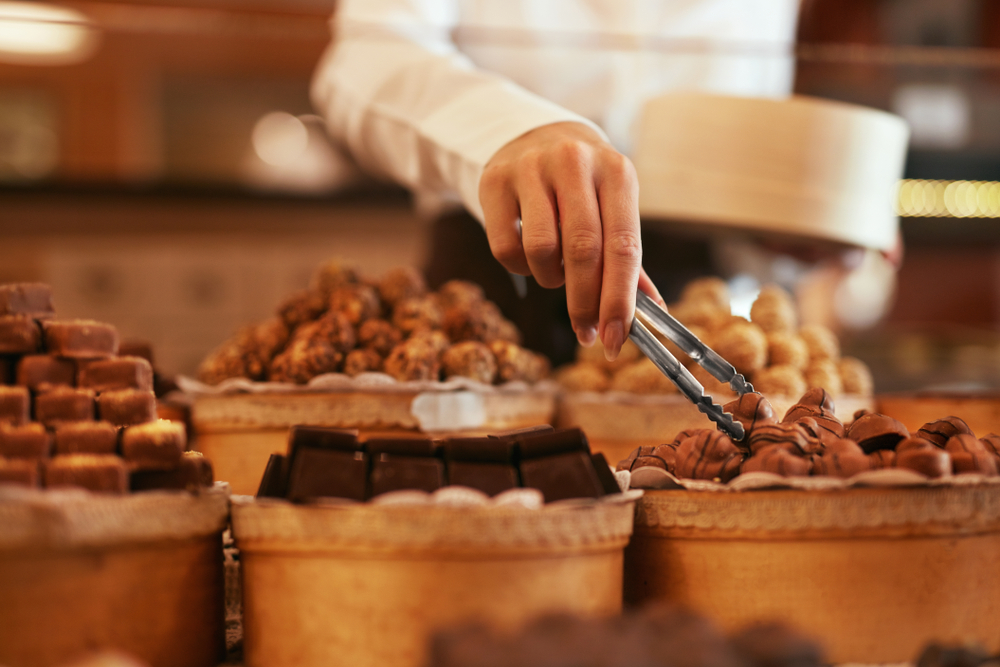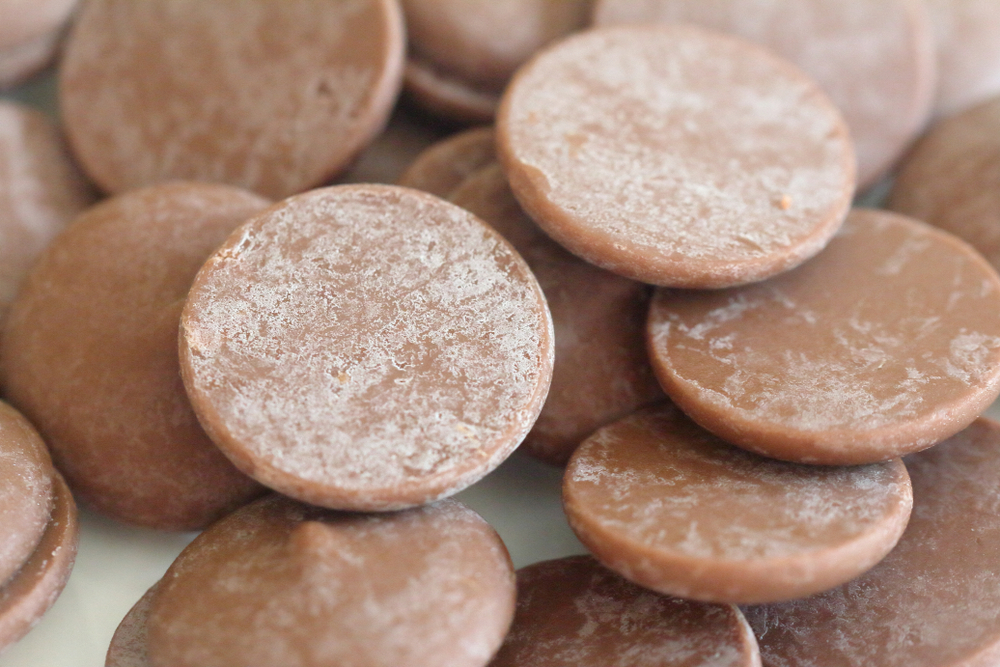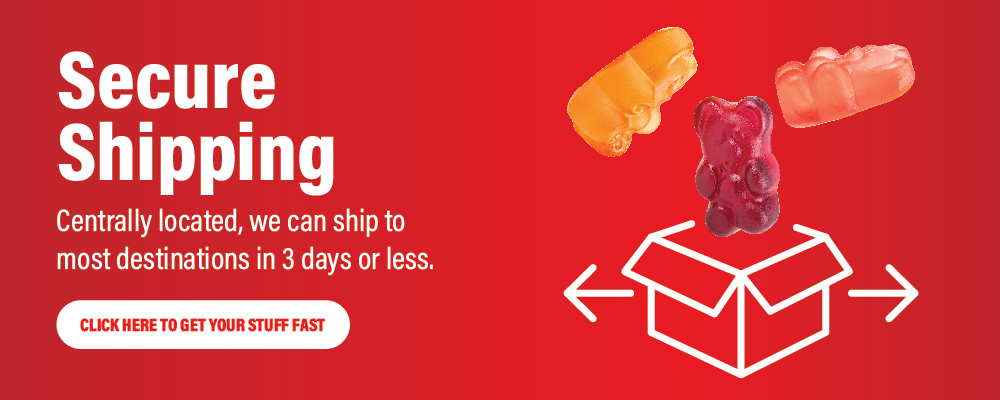Cold Packing Your Chocolate For Summer Shipping
| BY NEAL ROTHSTEIN

Chocolate melts when it gets hot. You were probably already aware of that fact, but if you’re sending chocolates out for the summer, you might want to know the best way to do it. So, how do you ship chocolate to your customers and ensure it gets to them intact, without making a mess and ruining the quality, taste and texture of the product?
At Redstone Foods, we’ve been shipping chocolates to our customers in the summertime for over 50 years. Our industry-leading cold packing method was developed by us over many years of trial and error. We have the experience and we just might be able to help you! Whether you’re an online retail candy shop, or a proud grandma who just made chocolates to send to your family, we are very happy to share with you some of our very best practices.
In this article, we will give you some tips and tricks when you’re packaging your chocolates for shipment. None of these methods include anything that is too complicated. There will be no cold pack canning of your chocolates, nor would we recommend freezing chocolate or leaving your chocolates in the refrigerator for a long period of time. That can create sugar bloom, which we will discuss in more detail later on in the article.
So, put your pressure canner away and just follow these simple procedures. Just follow these simple steps, and your chocolate bars should arrive in-tact and delicious as ever!

Tips on how to package your chocolate for shipping in warm weather:
We all know how much people love chocolates! I mean, who doesn’t? If you’re running an online candy business, odds are that you’ll be sending your beloved chocolate treats both near and far. To protect your product while it is in the post, here are some easy steps you can take to keep your customers happy.
1. Consider the destination you’re shipping to.
Specifically, think about the time of year and the climate of your candy’s final destination. While the northern part of the United States typically has more moderate temperatures in the summer, places like southern California, Arizona, Texas or Florida may be much warmer.
2. Shipping speed is key.
If you are shipping chocolates to somewhere warm, you’ll want them to get there fast. As a general rule, some candy businesses only ship chocolate on Mondays, Tuesdays or Wednesdays to ensure there’s no downtime in the shipping process.

If you’re shipping during the hot summer months you’ll want it to arrive at the final destination within at least 3 days. Avoiding non-business days (like the weekend or holidays) is crucial. If your package is sitting somewhere in a shipping yard or a non-refrigerated warehouse, your product might melt. This can happen even if you’ve included a frozen cold pack in the packing materials.
3. Keep the product cold before it ships.
It’s typically a good idea to keep your chocolates stored in a cool, dry place in the summertime. You’ll definitely want the chocolate to be cooler than room temperature before you pack it to ship. Some chocolatiers will use wine coolers, which are a little less cold than a typical refrigerator to keep their products cool. Some will even place the packaging in an ice bath or cold water bath before shipping. Starting out with cold chocolate will help keep your package cool for the entire length of its journey.
4. But don’t let it get too cold.
You won’t want your chocolate to get too cold as that can cause sugar bloom. This happens when the chocolate stays cold for too long and sugar crystals will start to form on the outside of the chocolate bar. If you’ve ever left chocolate in the fridge too long, you’ve probably seen this phenomenon.
Sugar bloom ends up looking like a dry, hard white surface film on the outside of the chocolate. This happens when moisture and condensation is absorbed by the sugar, which then evaporates and rises to the surface leaving behind a white, dusty layer. It doesn’t mean your chocolate is ruined, but the quality will not be ideal.

5. Pack your chocolates in an insulated shipping box.
You will want this to be at least twice the size of the original chocolate container, to make sure you’ll have enough room for a cold pack and insulated bubble wrap. The additional space in your insulated shipping box will not only protect your product from the heat, but it will also save it from being damaged if the box is dropped or smashed while in transit.

6. Use metalized bubble wrap packing.
Metalized bubble wrap will protect your chocolate from the outside heat. Not only does it deflect heat, it will insulate your product and also provide cushioning to protect it from shipping damages.
7. Wrap your cold packs in a leak-proof container.
If you’ve decided you need to use a cold pack, place it on the bottom of your shipping container and make sure that water and condensation will not leak through the packaging by wrapping it in a resealable, leak-proof bag.
8. Provide shipping alerts.
Most carriers will alert their customers when a package is arriving. It is a good idea to take the extra step yourself and notify your customers of their package’s arrival. That way they can bring them inside the moment they get there. The last thing you’d want is to have your chocolates end up melting on your customer’s doorstep after going through all these extra steps!
How fast can chocolate melt?
The ideal chocolate storage temperature is 65 – 68° degrees Fahrenheit. Many chocolates can start melting at just 72° degrees, but some can get a little warmer. The melting point can be affected by a number of factors: what type of chocolate it is, how it was tempered and even the quality of the cocoa solids and other ingredients used.

Typically, dark chocolate will melt the fastest, as it is closer to a natural state. Milk chocolate has added ingredients like sugar and milk that can slow the melting process. White chocolate is made with cocoa butter and typically has the most sugar added so it tends to melt the slowest.
We hope this article will assist you in delivering the best quality products to your customers! At Redstone Foods, we have shipped millions of pounds of chocolates all over the world to our very happy customers.
Learn what sets us apart from our competition. Give us a call, or sign up for an account with us online today. We look forward to hearing from you!
1-800-444-3520






